12 Hours Of Exposure On The Whirlpool Galaxy Revealing The Faint Dust Hiding Through Out Space

12 hours of exposure on the Whirlpool Galaxy revealing the faint dust hiding through out space
via reddit
More Posts from Monstrous-mind and Others
Water, Water Everywhere; We Track Drops to Drink!
When we think about what makes a planet habitable, we’re often talking about water. With abundant water in liquid, gas (vapor) and solid (ice) form, Earth is a highly unusual planet. Almost 70% of our home planet’s surface is covered in water!

But about 97% of Earth’s water is salty – only a tiny amount is freshwater: the stuff humans, pets and plants need to survive.
Water on our planet is constantly moving, and not just geographically. Water shifts phases from ice to water to vapor and back, moving through the planet’s soils and skies as it goes.
That’s where our satellites come in.

Look at the Midwestern U.S. this spring, for example. Torrential rain oversaturated the soil and overflowed rivers, which caused severe flooding, seen by Landsat.

Our satellites also tracked a years-long drought in California. Between 2013 and 2014, much of the state turned brown, without visible green.

It’s not just rain. Where and when snow falls – and melts – is changing, too. The snow that falls and accumulates on the ground is called snowpack, which eventually melts and feeds rivers used for drinking water and crop irrigation. When the snow doesn’t fall, or melts too early, communities go without water and crops don’t get watered at the right time.

Even when water is available, it can become contaminated by blooms of phytoplankton, like cyanobacteria . Also known as blue-green algae, these organisms can make humans sick if they drink the water. Satellites can help track algae from space, looking for the brightly colored blooms against blue water.


Zooming even farther back, Earth’s blue water is visible from thousands of miles away. The water around us makes our planet habitable and makes our planet shine blue among the darkness of space.

Knowing where the water is, and where it’s going, helps people make better decisions about how to manage it. Earth’s climate is changing rapidly, and freshwater is moving as a result. Some places are getting drier and some are getting much, much wetter. By predicting droughts and floods and tracking blooms of algae, our view of freshwater around the globe helps people manage their water.
Make sure to follow us on Tumblr for your regular dose of space: http://nasa.tumblr.com.
For the second time in history, a human-made object has reached the space between the stars. Our Voyager 2 probe now has exited the heliosphere – the protective bubble of particles and magnetic fields created by the Sun.
Comparing data from different instruments aboard the trailblazing spacecraft, mission scientists determined the probe crossed the outer edge of the heliosphere on Nov. 5. This boundary, called the heliopause, is where the tenuous, hot solar wind meets the cold, dense interstellar medium. Its twin, Voyager 1, crossed this boundary in 2012, but Voyager 2 carries a working instrument that will provide first-of-its-kind observations of the nature of this gateway into interstellar space.
Voyager 2 now is slightly more than 11 billion miles (18 billion kilometers) from Earth. Mission operators still can communicate with Voyager 2 as it enters this new phase of its journey, but information – moving at the speed of light – takes about 16.5 hours to travel from the spacecraft to Earth. By comparison, light traveling from the Sun takes about eight minutes to reach Earth.
Read more at https://go.nasa.gov/2QG2s16 or follow along with the mission @NASAVoyager on Twitter.
Make sure to follow us on Tumblr for your regular dose of space: http://nasa.tumblr.com


Puraten10 on Instagram
🔭🌌🌃

Saturn - GREEN-BLUE-VIOLET - August 11 1981 Credit: NASA/JPL-Caltech/Kevin M. Gill


(via 500px / …… by Fabrizio Riccardo Castorina)
🐈🐾🍁🍂🎃🍂🍁🌨🌄


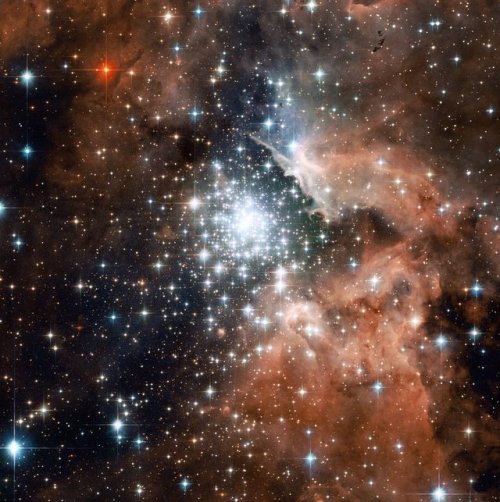
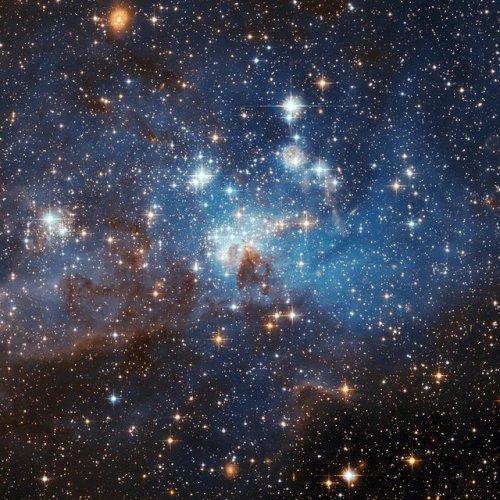
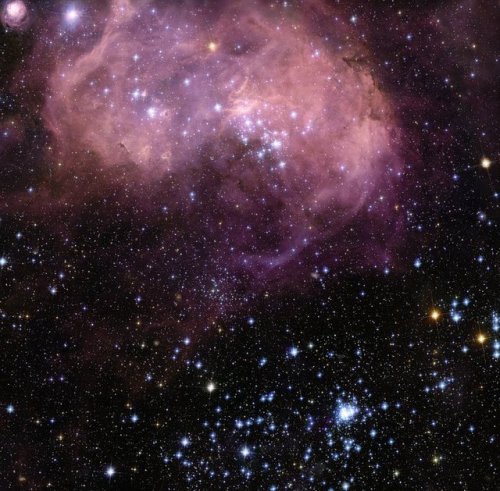
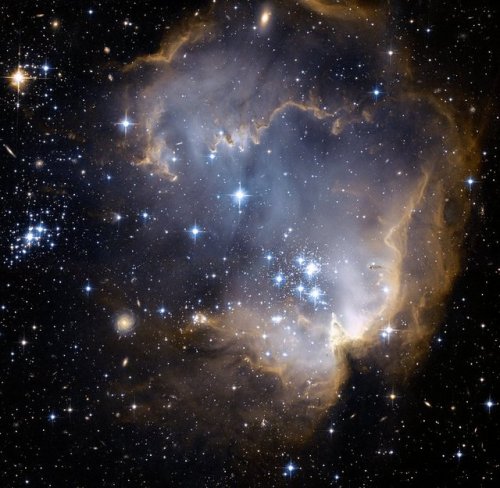
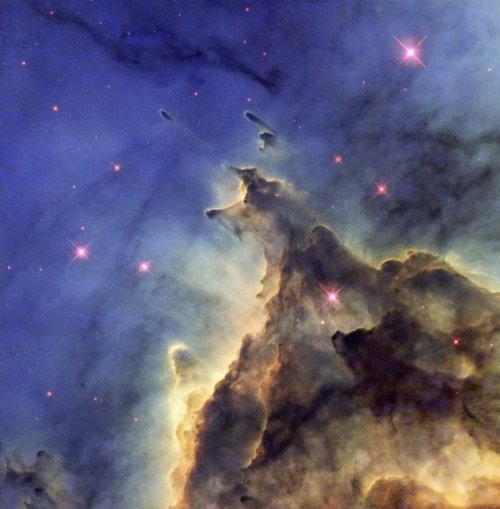
Star-forming regions amid gas and dust taken by the Hubble Space Telescope. (NGC 2467, NGC 3603, Star forming region in the Large Magellanic Cloud (LMC), N11, N90 and NGC 2174)
Image credit: NASA/ESA & Hubble
🐈⬛🐈🌌🌆🌕

Pixabay
-
 amaramalakashur liked this · 4 years ago
amaramalakashur liked this · 4 years ago -
 kolmetoista13 reblogged this · 4 years ago
kolmetoista13 reblogged this · 4 years ago -
 cool-blog-number-7 liked this · 4 years ago
cool-blog-number-7 liked this · 4 years ago -
 jblackmap liked this · 4 years ago
jblackmap liked this · 4 years ago -
 bluebeetletedkord liked this · 4 years ago
bluebeetletedkord liked this · 4 years ago -
 bluesman56 liked this · 4 years ago
bluesman56 liked this · 4 years ago -
 thegirlwhotouchesboobs liked this · 4 years ago
thegirlwhotouchesboobs liked this · 4 years ago -
 allofthecaffeine liked this · 4 years ago
allofthecaffeine liked this · 4 years ago -
 jakegyllenhanal liked this · 4 years ago
jakegyllenhanal liked this · 4 years ago -
 dubiouslynamed liked this · 4 years ago
dubiouslynamed liked this · 4 years ago -
 sanawabakadesu reblogged this · 4 years ago
sanawabakadesu reblogged this · 4 years ago -
 maryslittlesublamb liked this · 4 years ago
maryslittlesublamb liked this · 4 years ago -
 charlieslilkitten liked this · 4 years ago
charlieslilkitten liked this · 4 years ago -
 wemblingfool liked this · 4 years ago
wemblingfool liked this · 4 years ago -
 wemblingfool reblogged this · 4 years ago
wemblingfool reblogged this · 4 years ago -
 thehonorablejudgewhitey liked this · 4 years ago
thehonorablejudgewhitey liked this · 4 years ago -
 sirplantsalott liked this · 4 years ago
sirplantsalott liked this · 4 years ago -
 sherala007 liked this · 4 years ago
sherala007 liked this · 4 years ago -
 blueeyeddave liked this · 4 years ago
blueeyeddave liked this · 4 years ago -
 morganasol liked this · 4 years ago
morganasol liked this · 4 years ago -
 ami-ven liked this · 4 years ago
ami-ven liked this · 4 years ago -
 cruellsummer14 liked this · 4 years ago
cruellsummer14 liked this · 4 years ago -
 astrangetimeinmylife reblogged this · 4 years ago
astrangetimeinmylife reblogged this · 4 years ago -
 astrangetimeinmylife liked this · 4 years ago
astrangetimeinmylife liked this · 4 years ago -
 indigo-skies2315 liked this · 4 years ago
indigo-skies2315 liked this · 4 years ago -
 senshilegionnaire reblogged this · 4 years ago
senshilegionnaire reblogged this · 4 years ago -
 senshilegionnaire liked this · 4 years ago
senshilegionnaire liked this · 4 years ago -
 prime-headassery liked this · 4 years ago
prime-headassery liked this · 4 years ago -
 shtrbger reblogged this · 4 years ago
shtrbger reblogged this · 4 years ago -
 youmademerealize liked this · 4 years ago
youmademerealize liked this · 4 years ago -
 sherazade reblogged this · 4 years ago
sherazade reblogged this · 4 years ago -
 sherazade liked this · 4 years ago
sherazade liked this · 4 years ago -
 cakemagemaeve liked this · 4 years ago
cakemagemaeve liked this · 4 years ago -
 batfam16 liked this · 4 years ago
batfam16 liked this · 4 years ago -
 swords0827 liked this · 4 years ago
swords0827 liked this · 4 years ago -
 whatareyoureallyafraidof reblogged this · 4 years ago
whatareyoureallyafraidof reblogged this · 4 years ago -
 pedeburd liked this · 6 years ago
pedeburd liked this · 6 years ago -
 opalflowersforever liked this · 6 years ago
opalflowersforever liked this · 6 years ago -
 tinyvirginmary liked this · 6 years ago
tinyvirginmary liked this · 6 years ago -
 delusional20 liked this · 6 years ago
delusional20 liked this · 6 years ago -
 rubytuesday79 liked this · 6 years ago
rubytuesday79 liked this · 6 years ago
My ambition is handicapped by laziness. -C. Bukowski Me gustan las personas desesperadas con mentes rotas y destinos rotos. Están llenos de sorpresas y explosiones. -C. Bukowski. I love cats. Born in the early 80's, raised in the 90's. I like Nature, Autumn, books, landscapes, cold days, cloudy Windy days, space, Science, Paleontology, Biology, Astronomy, History, Social Sciences, Drawing, spending the night watching at the stars, Rick & Morty. I'm a lazy ass.
222 posts